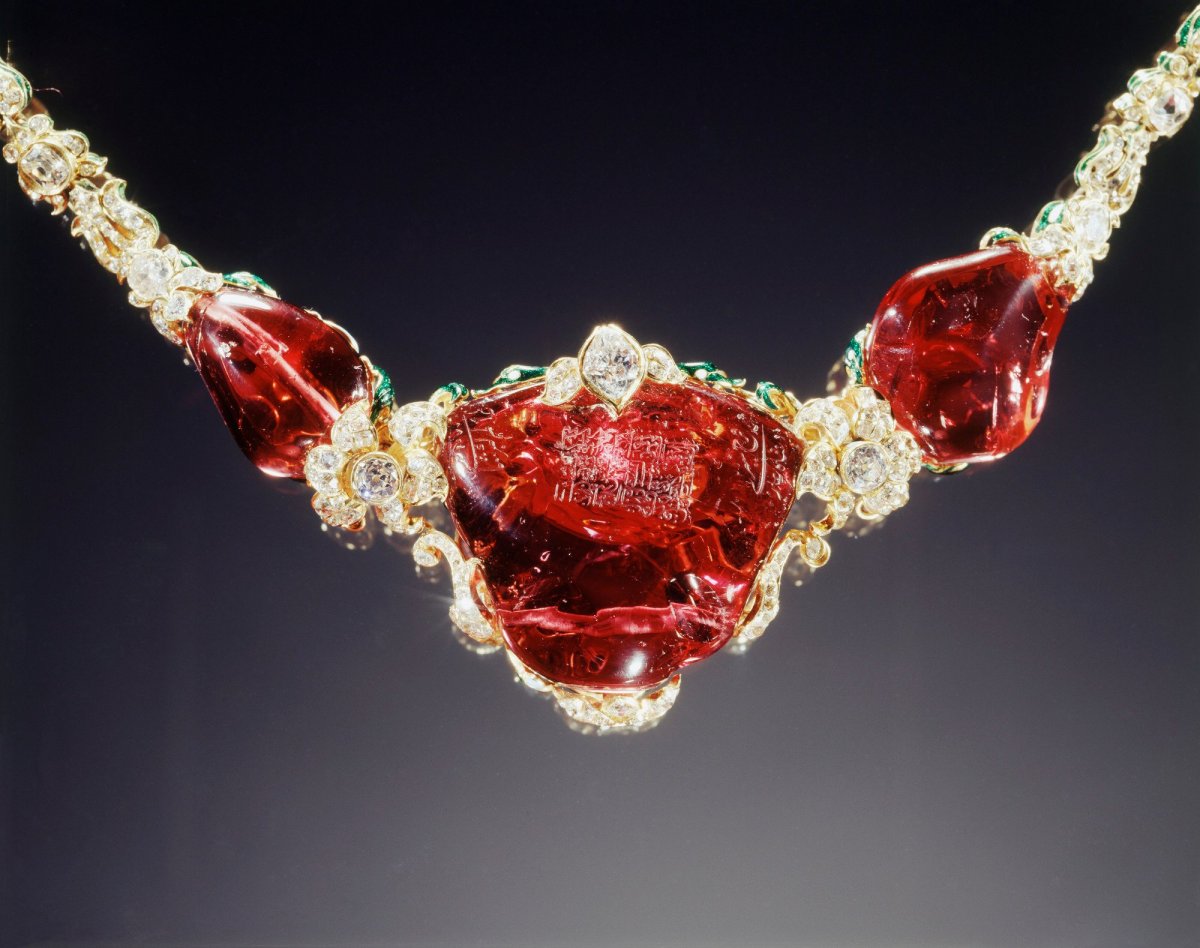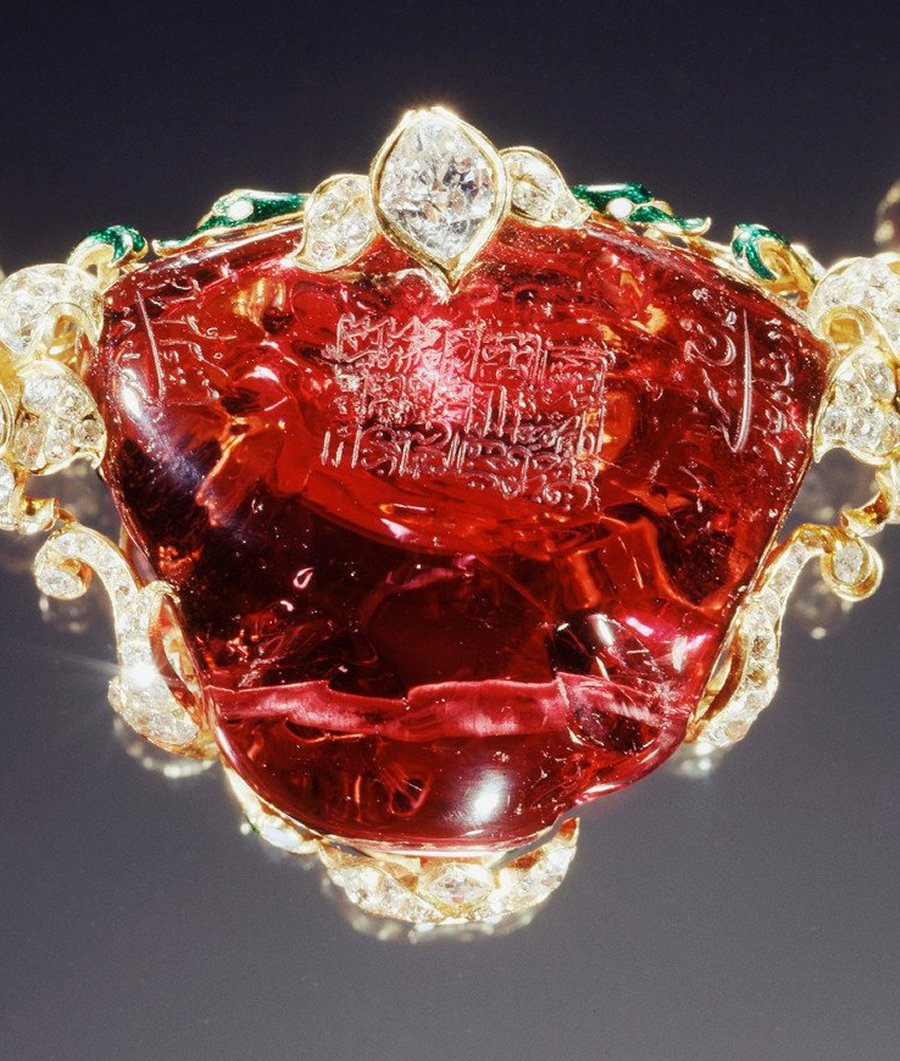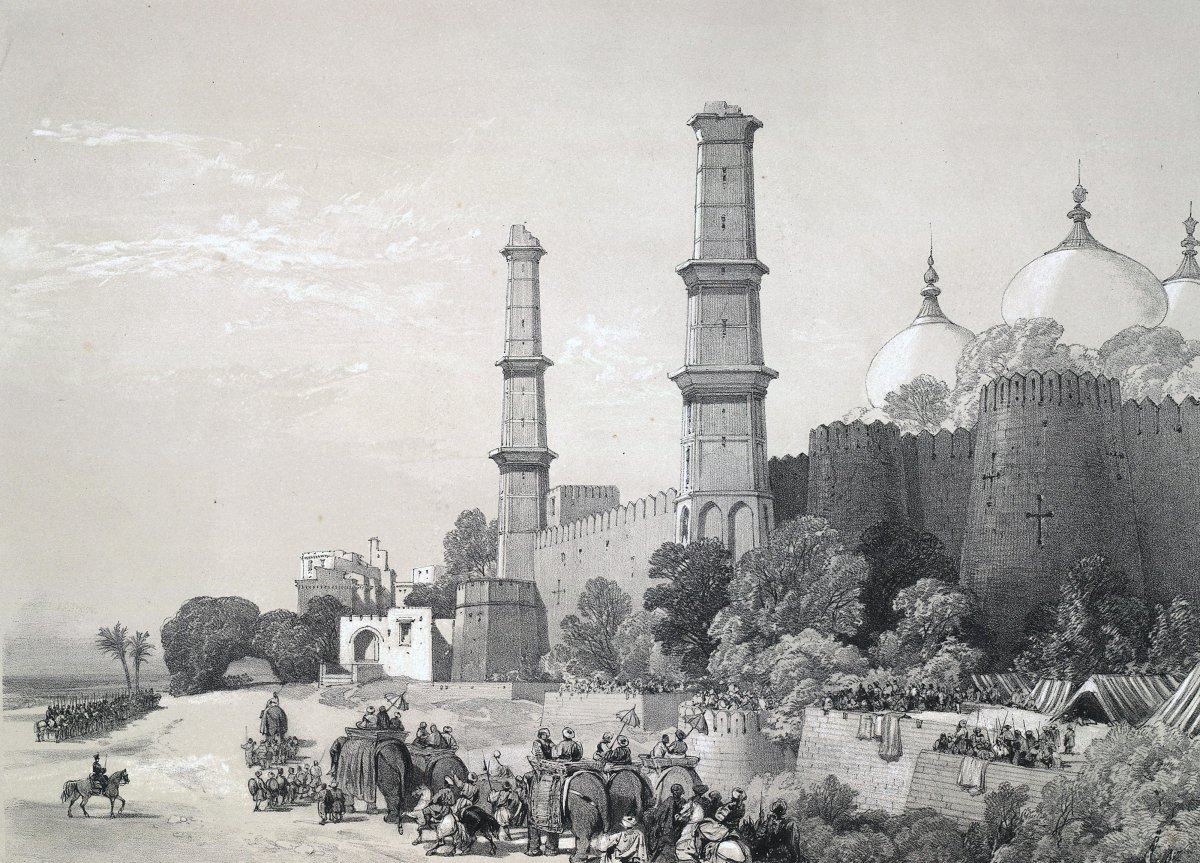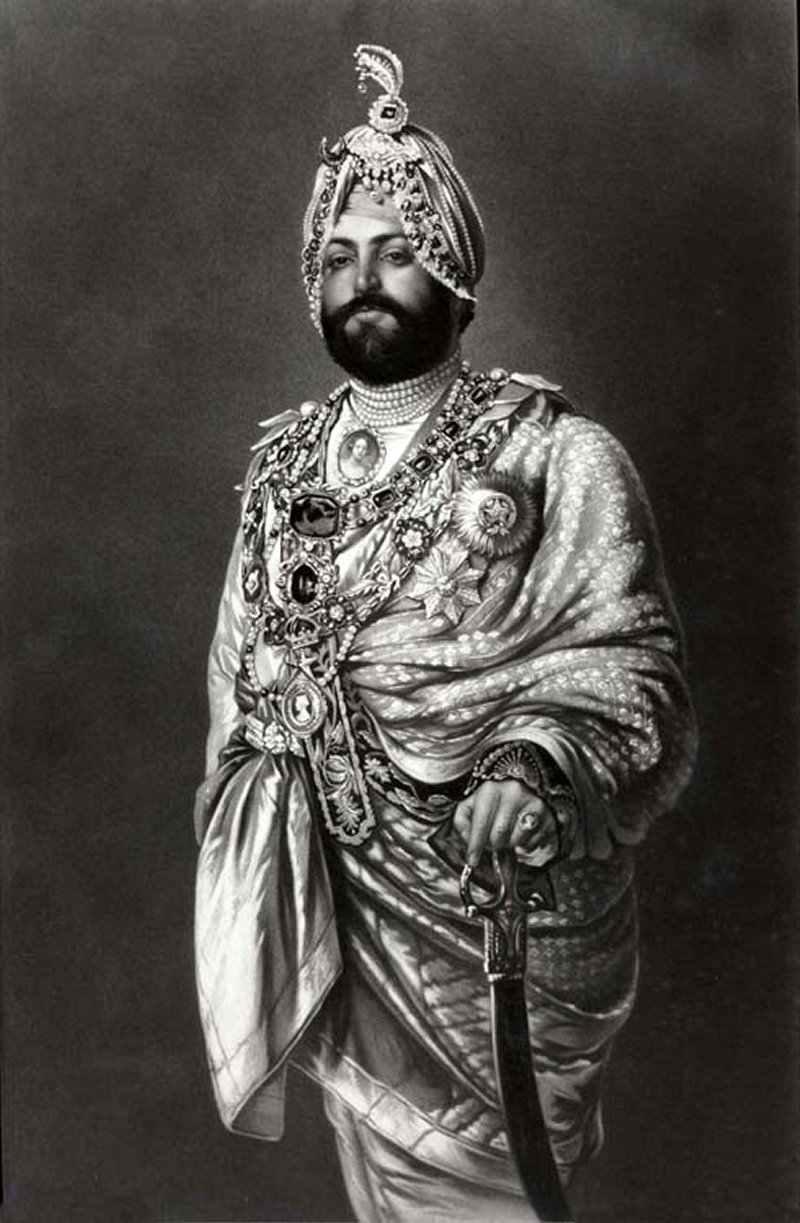
The British royal collection presently includes a rare spinel with a complicated history and a disputed present. Here’s a little history of the Timur Ruby.

Just like the Black Prince’s Ruby, this massive red gemstone is actually a spinel. The name of the stone comes from Timur (Tamerlane), the founder and namesake of the Timurid Empire in central Asia. Timur (1336-1405) was said to have been an early owner of the spinel, which would mean that it would have to have been mined by at least the 14th century. Timur’s ownership of the stone has, however, been contested by historians.
The irregularly-shaped cabochon spinel weighs in at an impressive 361 carats. The stone is etched with the names of five of the men who owned it: Jahangir (1569-1627), the 4th Mughal Emperor; Shah Jahan (1592-1666), the 5th Mughal Emperor; Farrukhsiyar (1685-1719), the 10th Mughal Emperor; Nader Shah (1688-1747), Shah of Iran; and Ahmad Shah Durrani (1722-1772), King of Afghanistan. (Jahangir also had the name of his father, Akbar the Great, engraved on the spinel.) The stone changed hands frequently, traveling from India to Iran and Afghanistan before returning to India once more.

By 1813, the Timur Ruby was in the collection of Maharaja Ranjit Singh, who ruled over the Sikh empire in the northern part of the Indian subcontinent. The gem was inherited by his son, Maharaja Sher Singh, in the 1840s. After Sher Singh was assassinated, his younger brother, Duleep Singh, became the new maharaja (and the new owner of the Timur Ruby). Duleep was then only five years old.

Duleep Singh’s youth made him extremely vulnerable. Indeed, in 1848-49, the British East India Company waged war on the Sikh Empire. Following the conflict, the Company annexed the Punjab region and compelled the ten-year-old maharaja to sign over his kingdom. Duleep Singh was placed in the care of a Scottish guardian and isolated from almost all contact with his fellow countrymen. Two famous gemstones that had been in his possession, the Timur Ruby and the Koh-i-Noor Diamond, were also ceded to the British. This transaction remains incredibly controversial to this day, with some depicting it as a gift exchange, others interpreting it as a part of a military treaty negotiation, and even others arguing that it was outright theft.
The two gemstones were taken to London and presented to Queen Victoria. Duleep Singh himself was also brought to England. Though he would make several attempts to relocate permanently to his native land, Singh was compelled by the British government to remain in Europe for the rest of his life, dying in Paris in 1893. He’d only been allowed to make two brief visits to India in the 1860s.

The Timur Ruby has also remained in England since the 1850s. In 1851, closer examination of the gemstone revealed that it was not a ruby but a spinel. (The technology to differentiate the two types of gems had only been around since the 1780s.) A new gold and diamond necklace setting for the spinel was made for Queen Victoria in 1853 by the crown jeweler, Garrard. It was designed so that the Timur Ruby could be removed from the necklace and replaced by the Koh-i-Noor Diamond, further reinforcing the idea of the two stones as sister gems.

Though several queens wore the Koh-i-Noor Diamond often in the second half of the nineteenth century and the first half of the twentieth, the Timur Ruby Necklace was worn much more rarely. In the BBC’s 1969 documentary, Royal Family, the Queen was filmed handling the necklace and discussing it with her dresser. She calls the piece a “fascinating necklace,” and she suggests that they should have a dress made so that she could wear the jewel. She then notes that she has actually worn the necklace before, something confirmed by her dresser. It’s an interesting moment, as no photos appear to exist showing the Queen wearing the necklace. And certainly now both the Koh-i-Noor Diamond and Timur Ruby are considered too politically controversial to wear, so it seems unlikely that we’ll see any member of the royal family wearing the spinel again.
Leave a Reply
You must be logged in to post a comment.